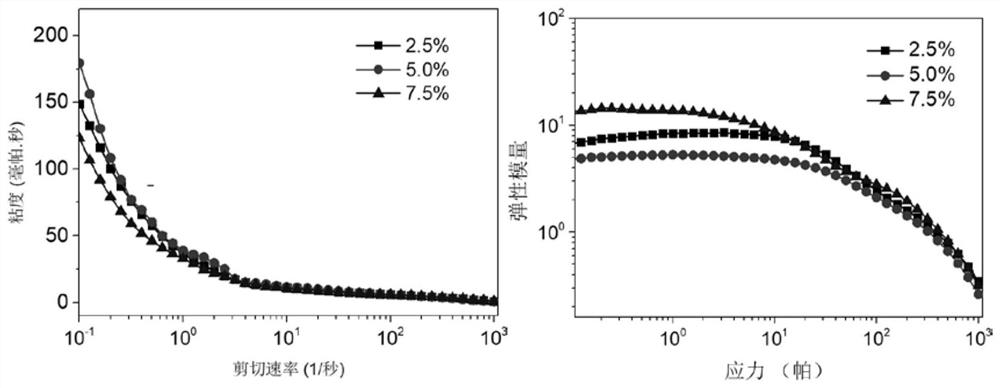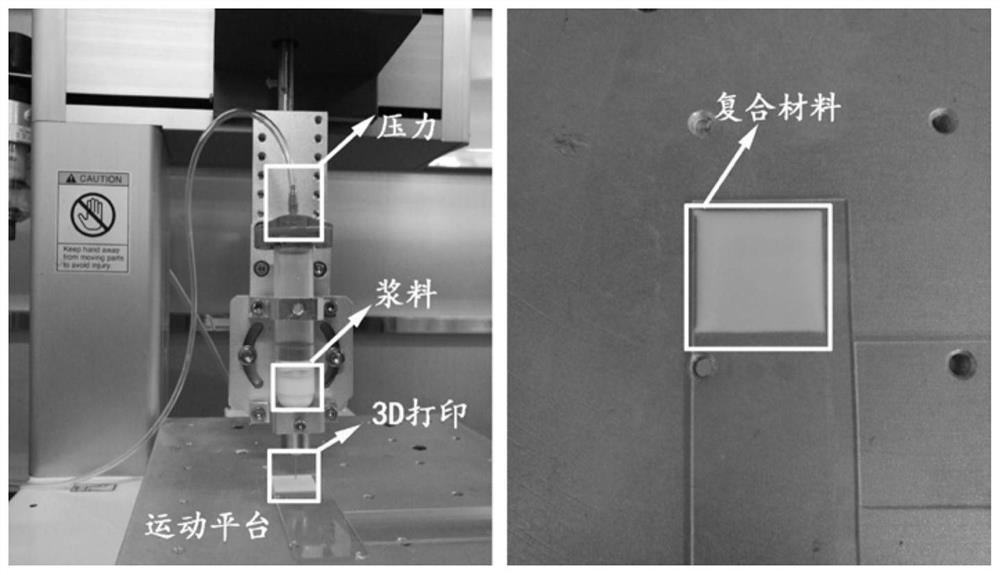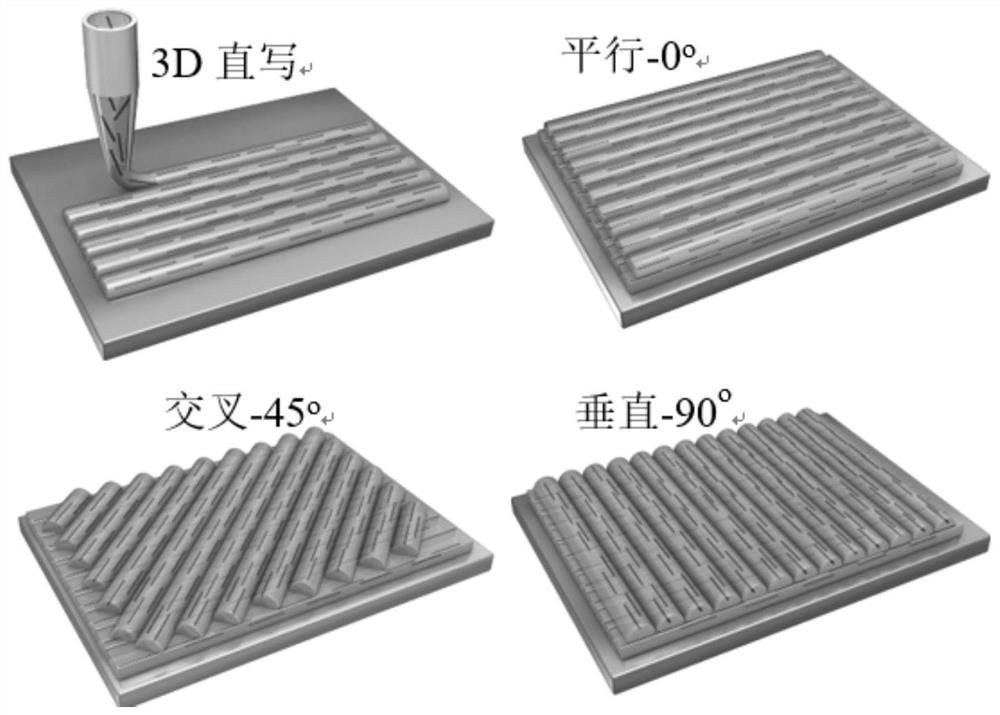A New Dielectric Composite Material
A composite material and dielectric technology, applied in the field of new dielectric composite materials, can solve problems such as inhomogeneity and inconsistency, harsh process conditions, and damage to the structure of composite materials, so as to solve the problem of dispersion, high energy storage density, The effect of efficient arrangement
- Summary
- Abstract
- Description
- Claims
- Application Information
AI Technical Summary
Problems solved by technology
Method used
Image
Examples
Embodiment
[0050] Example: This scheme prepares BaTiO 3 / P(VDF-CTFE) composite material
[0051] 1. In situ modification of BaTiO in step 1 3 The scheme of the nanowires is the same as that of the comparative example. Compared with the comparative example, this example adopts 3D direct writing technology to prepare the composite film, and the specific steps are as follows:
[0052] Weigh 0.0635g, 0.0866g, 0.177g, 0.274gPTFMPCS modified BaTiO 3 The nanowires were added to 12.5g of DMF solvent (the volume ratios of nanowires in the composite material were 1.5%, 2.5%, 5% and 7.5% respectively), ultrasonically dispersed for 10min, then 1.2gP(VDF-CTFE) resin was added, ultrasonically After the dispersion, ball milled for two days to obtain a uniformly dispersed suspension slurry, which is used as each group of examples.
[0053] Transfer the slurry of each embodiment to the barrel, connect the air compressor to adjust the pressure, so that the slurry extrusion device installed on the Z ax...
PUM
 Login to View More
Login to View More Abstract
Description
Claims
Application Information
 Login to View More
Login to View More - R&D
- Intellectual Property
- Life Sciences
- Materials
- Tech Scout
- Unparalleled Data Quality
- Higher Quality Content
- 60% Fewer Hallucinations
Browse by: Latest US Patents, China's latest patents, Technical Efficacy Thesaurus, Application Domain, Technology Topic, Popular Technical Reports.
© 2025 PatSnap. All rights reserved.Legal|Privacy policy|Modern Slavery Act Transparency Statement|Sitemap|About US| Contact US: help@patsnap.com



